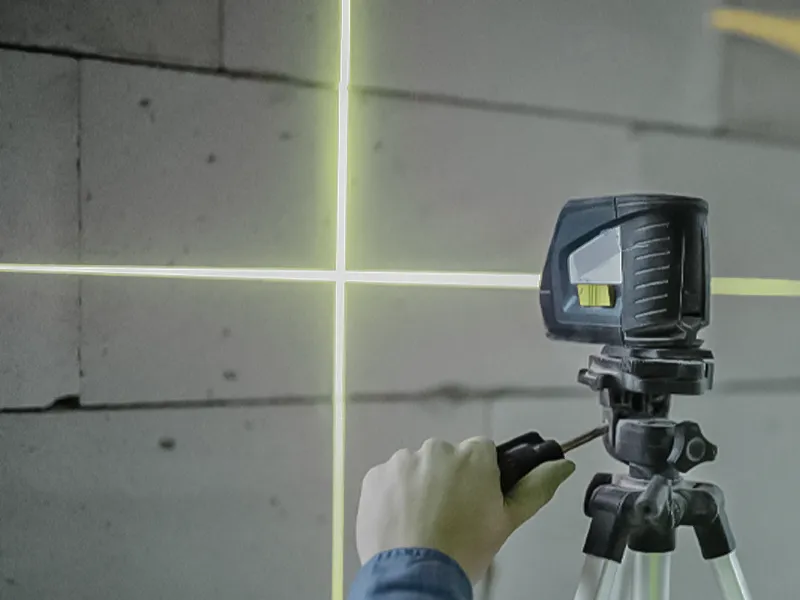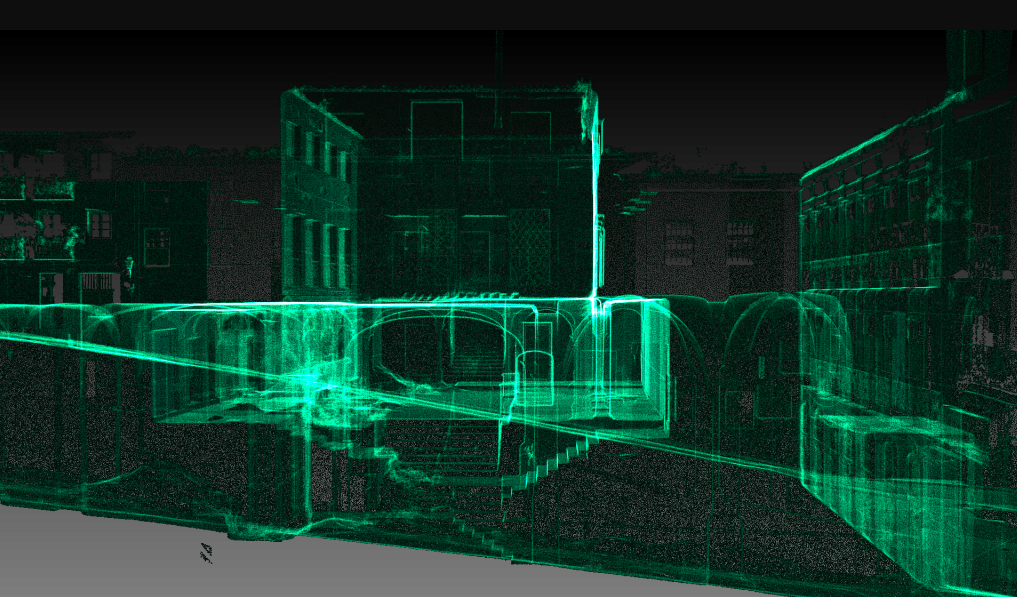Exploring the Applications of 3D Laser Scanning in Archaeology and Cultural Heritage Preservation
The integration of 3D laser scanning innovation in archaeology and social heritage conservation marks a significant innovation in how archaeological sites and artefacts are documented and examined. This non-invasive approach gives specific spatial data, disclosing detailed information that were previously hard to catch. As the applications of this modern technology remain to develop, various ramifications for education, conservation, and documents arise, inviting more expedition right into its transformative influence on the field.
Recognizing 3D Laser Scanning Innovation
3D laser scanning technology has transformed the field of archaeology by providing specific and in-depth spatial information. This advanced technology uses laser beam of lights to record countless information factors from an item or site, creating a highly accurate three-dimensional representation (3D Scanning). The resulting point clouds can reveal elaborate details of historical sites, structures, and artefacts that may be unnoticeable to the naked eye
Using this innovation, archaeologists can record the precise dimensions, forms, and positions of things with extraordinary accuracy. This approach decreases the threat of human error and gets rid of the need for considerable hand-operated dimensions. Furthermore, the data gathered can be evaluated and shared easily, helping with partnership amongst researchers. By integrating 3D laser scanning with GIS and other electronic tools, excavators boost their ability to picture and interpret historical contexts, bring about much deeper insights right into old societies and settings.
Enhancing Archaeological Documents
3D laser scanning significantly improves historical documents through its capability to produce precise website maps. This innovation promotes comprehensive artifact analysis, providing insights that typical techniques might forget. In enhancement, it guarantees the conservation of contextual information, which is important for understanding the connections within historical sites.
Accurate Website Mapping
While conventional mapping methods typically fight with capturing the detailed details of archaeological websites, advanced laser scanning technology offers an innovative strategy to exact website mapping. This approach allows archaeologists to produce highly detailed and exact three-dimensional depictions of sites, showcasing topographical variants and structural features with remarkable fidelity. The ability to record countless data points in an issue of minutes permits complete paperwork, which can be easily updated and shared among scientists. Additionally, laser scanning helps with the dimension of intricate geometries that would be tough to evaluate utilizing conventional tools. As an outcome, this innovation boosts the precision of website maps, adding substantially to the conservation and understanding of social heritage resources.
Thorough Artefact Analysis
Laser scanning modern technology substantially boosts the analysis of historical artifacts, offering scientists with extraordinary information and accuracy. This technique catches intricate surface area textures, dimensions, and includes that traditional documents techniques might ignore. By producing high-resolution 3D designs, scholars can very closely analyze artifacts without the danger of damage fundamental in physical handling. This precision permits better relative studies, making it possible for professionals to identify manufacturing techniques, stylistic variants, and possible social importance. Furthermore, the capability to control and imagine information in 3 dimensions helps with a much deeper understanding of artefact functionality and use. Overall, laser scanning fosters an extra detailed technique to archaeological documents, guaranteeing that crucial details concerning artifacts is preserved for future research and education.
Conservation of Contextual Data
Preserving contextual information is essential for enhancing archaeological paperwork, as it assures that searchings for are comprehended within their original ecological and social structures. 3D laser scanning innovation greatly adds to this preservation effort by catching in-depth spatial partnerships amongst artifacts, structures, and their environments. By generating precise 3D designs, excavators can record the precise areas and positionings of objects in situ, assisting in a thorough understanding of their context. This technology allows scientists to revisit and evaluate sites long after excavation, keeping the honesty of contextual information. Furthermore, digital records created via scanning can be shared around the world, promoting joint study and public engagement. Eventually, maintaining contextual information via 3D laser scanning enriches historical narratives and advertises an extra extensive gratitude of cultural heritage.
Preservation of Cultural Heritage Sites
As improvements in innovation remain to evolve, the preservation of social heritage sites has ended up being increasingly reliant on innovative techniques such as 3D laser scanning. This innovation permits the comprehensive documents of artefacts, landscapes, and frameworks, recording their accurate dimensions and spatial connections in a non-invasive way. By creating high-resolution 3D models, researchers can check and evaluate wear and tear patterns, allowing aggressive conservation approaches.
Furthermore, 3D laser scanning facilitates the sharing of comprehensive website information with the international community, advertising partnership amongst guardians, chroniclers, and archaeologists. These versions work as indispensable sources for education and public involvement, raising awareness of social heritage issues. Additionally, the electronic records created can secure versus loss as a result of ecological aspects, criminal damage, or forget. On the whole, 3D laser scanning represents a transformative technique to the preservation of cultural heritage, making certain that these sites can be researched and valued by future generations.

Remediation and Repair Efforts
The thorough paperwork achieved via 3D laser scanning plays a considerable role in reconstruction and repair initiatives within archaeology. This technology offers specific measurements and high-resolution images, permitting exact digital versions of structures and artefacts. These versions act as important recommendations throughout repair procedures, enabling excavators to visualize the initial design and make notified choices regarding techniques and materials required for repair service.
Additionally, 3D laser scanning facilitates the reconstruction of harmed or shed aspects by creating detailed reproductions. This procedure aids in making certain that repairs maintain historical integrity while also enabling for ingenious approaches to restore sites. The ability to evaluate wear patterns and structural weak points through checked data enhances understanding of a site's historic context and its use gradually. 3D laser scanning not only protects the physical facets of cultural heritage yet likewise improves the story of background, leading future repair ventures.
Educational and Study Opportunities
The assimilation of 3D laser scanning in archaeology opens considerable instructional and research study chances. Academic cooperations can improve the understanding of ancient websites, while specialized training workshops furnish experts with crucial skills for using this innovation. Together, these campaigns cultivate a richer involvement with archaeological methods and methodologies.
Academic Collaborations in Archaeology
Joint initiatives in archaeology have come to be progressively important for advancing both academic and study opportunities. By promoting collaborations amongst universities, research study establishments, and cultural heritage organizations, these partnerships assist in the exchange of expertise and sources, boosting the top quality of archaeological studies. Joint tasks commonly leverage varied knowledge, enabling detailed analyses and cutting-edge methods, especially in the application of technologies like 3D laser scanning. Such collaborations likewise promote interdisciplinary strategies, involving areas such as conservation, location, and background scientific research. In addition, academic partnerships often bring about the growth of brand-new curricula and training programs, preparing the following generation of archaeologists to successfully use sophisticated modern technologies in their job. Eventually, these alliances contribute to the conservation and understanding of social heritage.
Training Workshops for Experts
Educating workshops for professionals in archaeology click over here now are progressively vital for improving skills in the application of innovative modern technologies such as 3D laser scanning. These workshops provide participants with hands-on experience in using advanced tools and software, fostering a deeper understanding of information capture and analysis procedures. Specialists can find out to produce accurate electronic models of historical websites, which substantially aid in paperwork and conservation efforts. In addition, these training sessions typically include content conversations on ideal techniques and instance researches, advertising understanding exchange amongst individuals. By buying continuous education and learning, professionals can remain upgraded on developing modern technologies, inevitably enhancing the performance of their research study and social heritage preservation efforts. This dedication to ability enhancement is important for advancing the field of archaeology.
Future Patterns in 3D Laser Scanning for Archaeology
As innovations in innovation remain to improve different fields, the future of 3D laser scanning in archaeology promises to boost both the precision and efficiency of site documentation and evaluation. Emerging fads suggest an expanding assimilation of synthetic intelligence and artificial intelligence, assisting in automated information handling and interpretation. This advancement will permit archaeologists to evaluate intricate datasets faster, bring about faster understandings into historic contexts.
The assimilation of drone technology with 3D laser scanning is most likely to broaden, allowing extensive aerial studies of archaeological websites that are challenging to access. The boosting cost of scanning equipment will certainly democratize gain access to, empowering smaller organizations and independent scientists to utilize these devices successfully. Additionally, innovations in virtual truth and enhanced reality will enable immersive experiences for public engagement and education, making historical searchings for extra interactive and obtainable. These trends collectively signal a transformative future for archaeology, boosting conservation efforts and broadening the self-control's outreach.
Regularly Asked Concerns
How Much Does 3D Laser Scanning Tools Price?

What Are the Limitations of 3D Laser Scanning?
The constraints of 3D laser scanning consist of high costs, possible data processing challenges, sensitivity to ecological problems, and trouble recording detailed information in complex surface areas, which can affect the precision and efficiency of checked depictions. (3D Scanning)

Can 3D Laser Scanning Be Utilized Undersea?
Yes, 3D laser scanning can be used underwater, however it calls for specific devices and techniques to conquer difficulties such as water distortion and restricted presence. Effective applications have been demonstrated in marine archaeology and undersea surveys.
Just how Long Does a Scanning Project Normally Take?
A scanning job usually takes anywhere from a couple of days to numerous weeks, great post to read depending on the complexity and size of the area being checked, together with the prep work and post-processing demands included in the task.
Are There Details Software Application Demands for Handling 3D Checks?
Yes, details software requirements for processing 3D scans consist of programs efficient in handling huge factor clouds, such as Autodesk ReCap, Cyclone, or MeshLab. These devices promote evaluation, visualization, and integration into numerous applications successfully.
The combination of 3D laser scanning modern technology in archaeology and cultural heritage preservation marks a considerable innovation in just how historic websites and artefacts are recorded and analyzed. 3D laser scanning modern technology has revolutionized the area of archaeology by giving specific and detailed spatial information. As advancements in innovation proceed to advance, the preservation of social heritage sites has actually come to be significantly reliant on cutting-edge methods such as 3D laser scanning. As advancements in modern technology continue to improve different fields, the future of 3D laser scanning in archaeology assures to enhance both the precision and effectiveness of site paperwork and evaluation. The assimilation of drone technology with 3D laser scanning is most likely to broaden, allowing complete airborne surveys of archaeological sites that are difficult to gain access to.